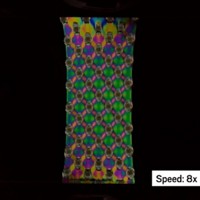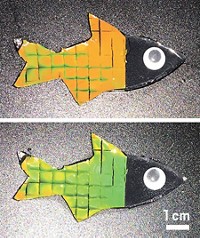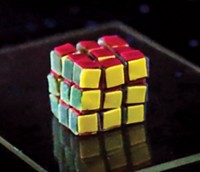Advertisement
Grab your lab coat. Let's get started
Welcome!
Welcome!
Create an account below to get 6 C&EN articles per month, receive newsletters and more - all free.
It seems this is your first time logging in online. Please enter the following information to continue.
As an ACS member you automatically get access to this site. All we need is few more details to create your reading experience.
Not you? Sign in with a different account.
Not you? Sign in with a different account.
ERROR 1
ERROR 1
ERROR 2
ERROR 2
ERROR 2
ERROR 2
ERROR 2
Password and Confirm password must match.
If you have an ACS member number, please enter it here so we can link this account to your membership. (optional)
ERROR 2
ACS values your privacy. By submitting your information, you are gaining access to C&EN and subscribing to our weekly newsletter. We use the information you provide to make your reading experience better, and we will never sell your data to third party members.
Materials
Rubik’s cube with a chemical twist
Colored hydrogel tiles could find use as smart chemical arrays
by Bethany Halford
August 9, 2019
The Rubik’s cube—a popular toy puzzle that has confounded adults and children since the 1980s—has been recreated with chemistry. An international group of researchers have created a working Rubik’s cube held together only by chemical bonds (Adv. Mater. 2019, DOI: 10.1002/adma.201902365).
In January 2018, University of Texas at Austin’s Jonathan Sessler was at a meeting presenting work his lab had done making 2-D patterns from tiles of colored hydrogels. Philip A. Gale, a chemist at the University of Sydney who specializes in supramolecular chemistry and was a postdoc in Sessler’s lab in the 1990s, challenged him to make the materials into a Rubik’s cube.
“The patterns in Jonathan’s arrays of gels reminded me of the face of a Rubik’s Cube,” Gale says. “I wondered whether it would be possible to construct a functioning cube from gel blocks which would allow the blocks to be easily reconfigured.”
Sessler put postdoc Xiaofan Ji on the project right away. The seemingly whimsical task turned out to be a tremendous challenge. Ji had problems creating hydrogels with the six colors needed to make a Rubik’s cube while also retaining the material’s structural integrity. It was only when Ji moved on to a second postdoc, with Ben Zhong Tang at Hong Kong University of Science and Technology, that he discovered the right ingredients: compounds Tang developed that, thanks to aggregation, fluoresce when they’re embedded in solid films.
They then needed material with variable stickiness so that the colored tiles could be firmly attached, but the cubes could still be rotated to play the game. The team settled on a hydrogel that forms acylhydrazone crosslinks from the reaction of a diacylhydrazine precursor with a tetraformyl partner. After being in contact for a short period of time—about an hour—tiles made of this hydrogel can be stuck and unstuck with ease. But when enough acylhydrazone crosslinks are made—usually over a 24-h period—the material becomes permanently stuck, which makes the tiles stay together.
The researchers created 27 small cubes with six colored tiles attached to each and left them for a day. They then assembled the cubes into a 3 × 3 × 3 Rubik’s cube. After an hour, they were able to rotate the cube just as if it were the classic toy puzzle.
“Because this is all chemical, if we want to cheat, all we do is pick up one cube, rotate it so that it matches the pattern and stick it back in,” Sessler says. “So we can solve the Rubik’s cube in a way that you can’t with a plastic Rubik’s cube.”
There is one hitch: after 24 h, the Rubik’s cube locks into place. The same mechanism that allowed the team to stick on the colored tiles made the game unplayable. “We’ve basically made a material that, like plaster of Paris or modelling clay, over time becomes harder,” Sessler says.
Although recreating the fad toy was fun, Sessler says that isn’t his ultimate aim. He’d like to create arrays from tiles of smart soft materials that rely on something like Tang’s fluorescent materials to change color in the presence of chemical stimuli. Such arrays could communicate medical information when placed on a person’s skin or guide robots performing chemical reactions, such as an acid-base titration.
“It’s elegant work and opens up a new approach to the production of arrays of sensors,” Gale says. “I’m delighted they’ve met the challenge.”





Join the conversation
Contact the reporter
Submit a Letter to the Editor for publication
Engage with us on Twitter